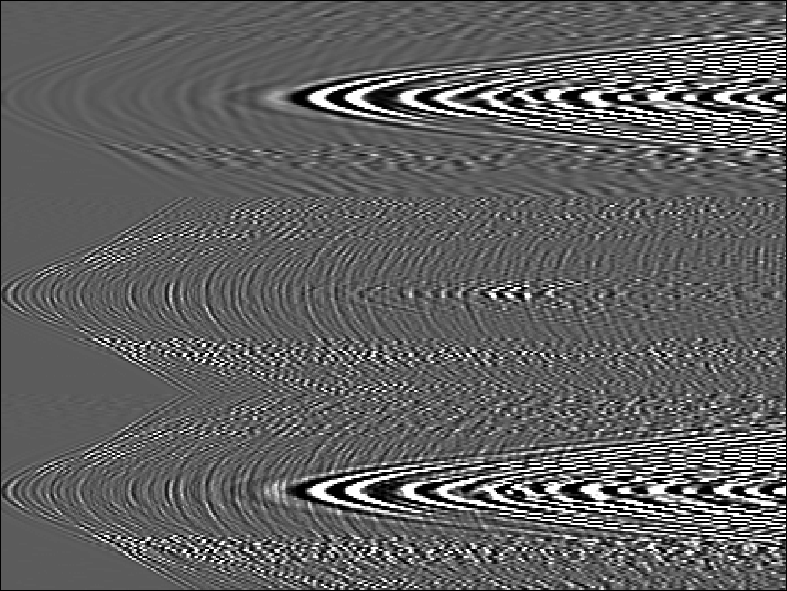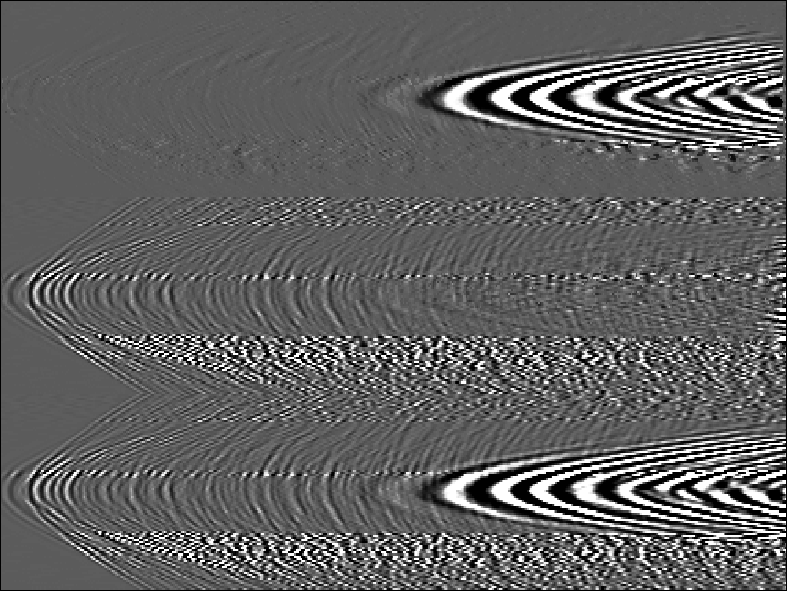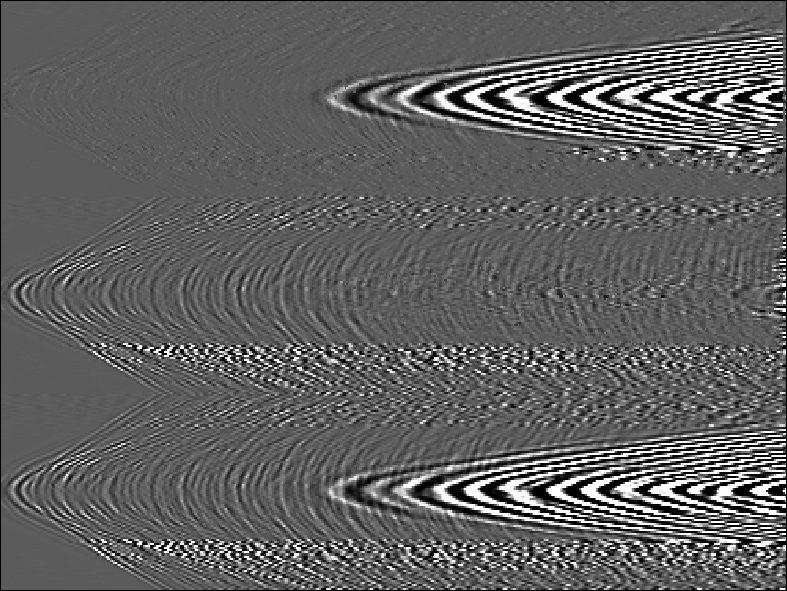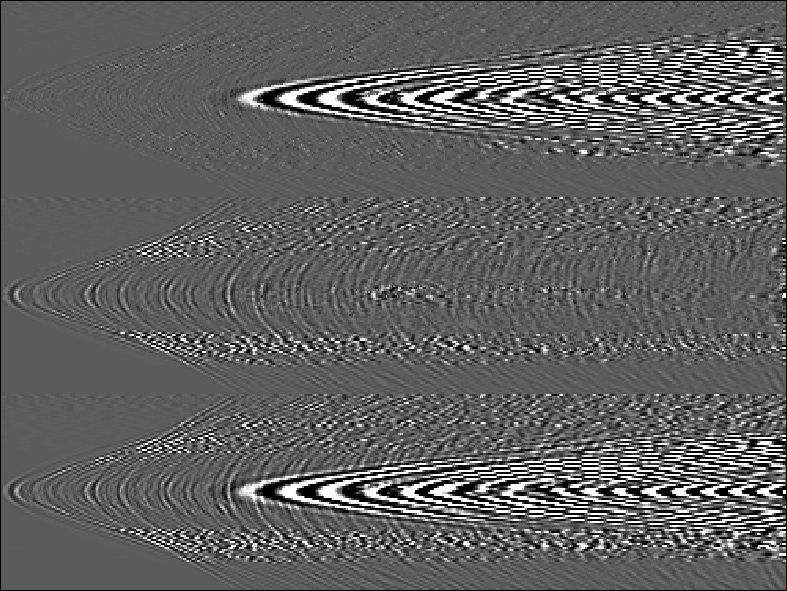We applied the technique to four 2-D receiver lines from a Middle East 3-D shot gather.
One of these 2-D lines was shown earlier in Figure 2.
The results are shown in Figures 3, 5,
6, and 7.
Considering the low S/N, the extraction result is quite impressive.
Many primary events which were hopelessly masked in the raw data become apparent after
signal/noise separation.
As proof of the power of this method of separation, compare Figure 3
to Figure 4, where the latter is simply the result of subtracting
the noise model from the data, or equivalently, lowcut filtering.
The lowcut filter very effectively suppresses the ground roll, but severely damages the
low frequency portion of the signal.
The difference between the two results reinforces the fact that the predictive method can
and will succeed with an imperfect noise model.
Although the predictive method places some signal energy in the noise panel, the character
of the signal seems preserved for the most part.
Likely, any degradation of the signal within the noise cone is embedded signal which
was not ignored in the estimation of ![]() .
.
 |
 |
 |
 |
 |